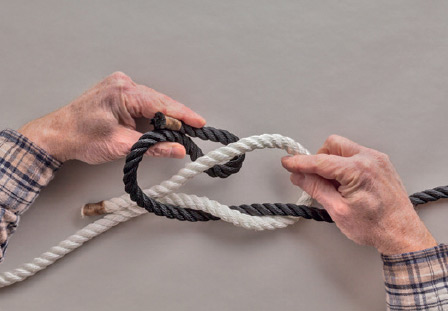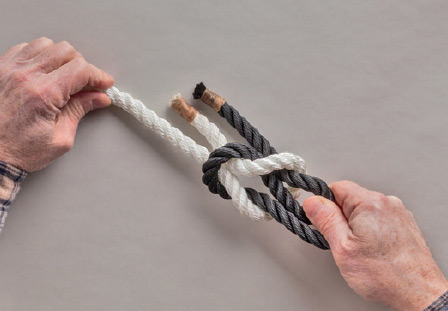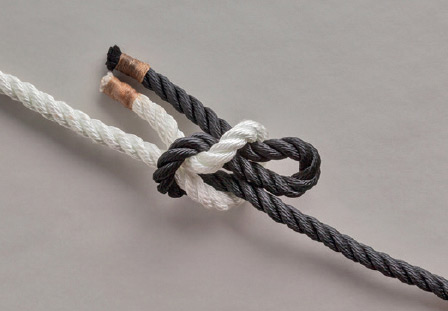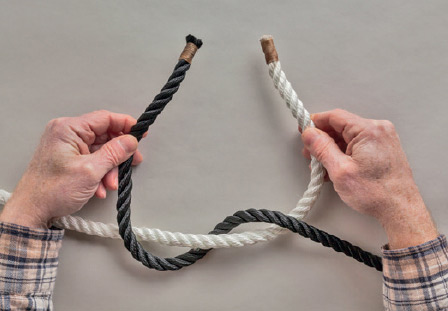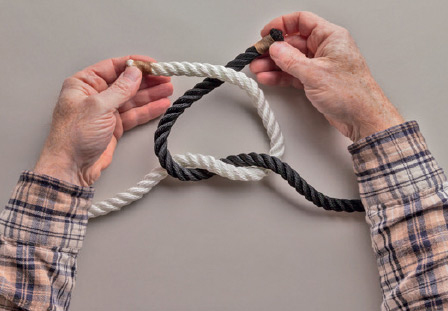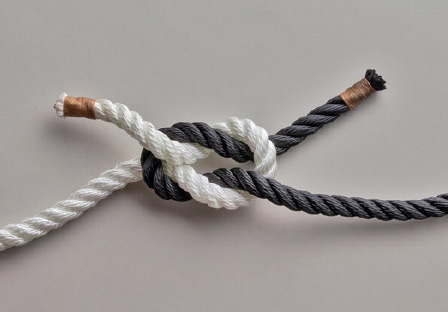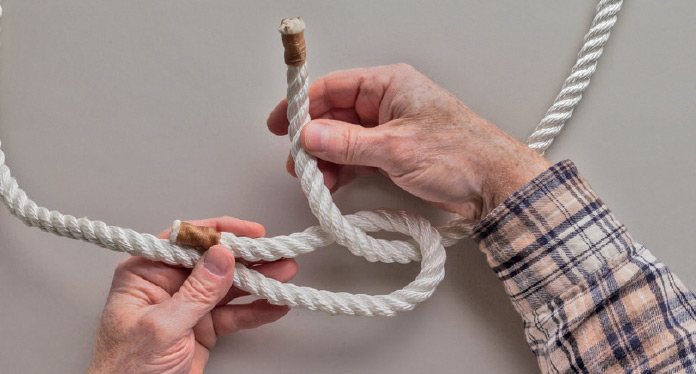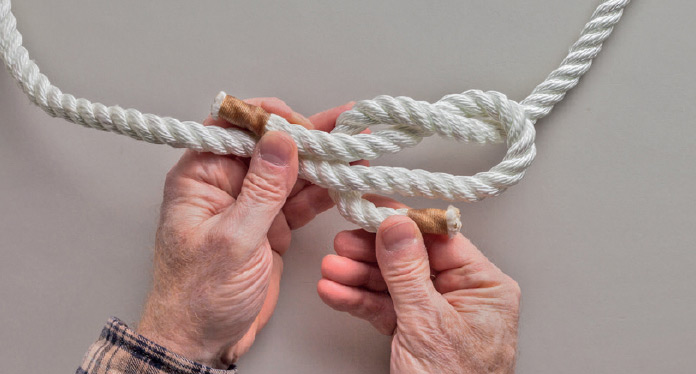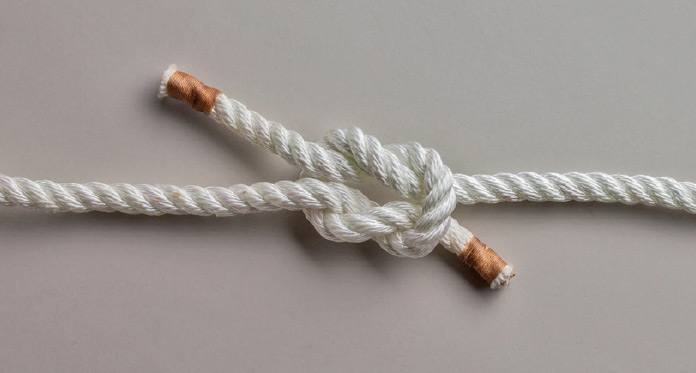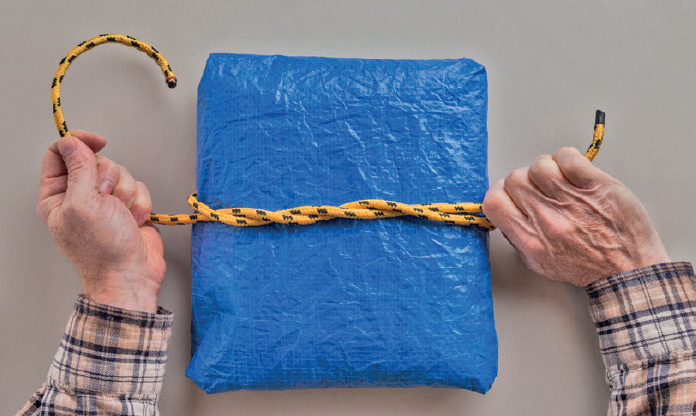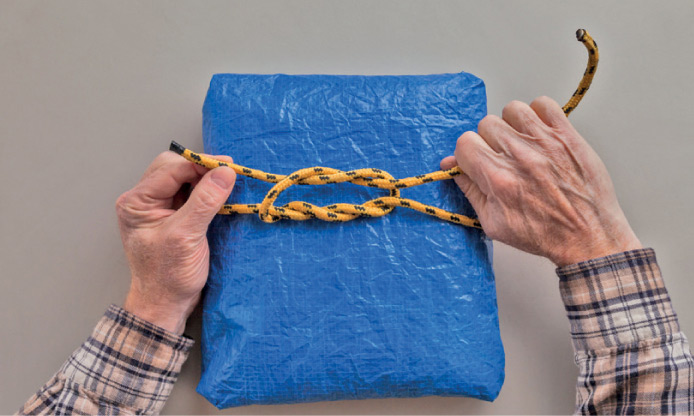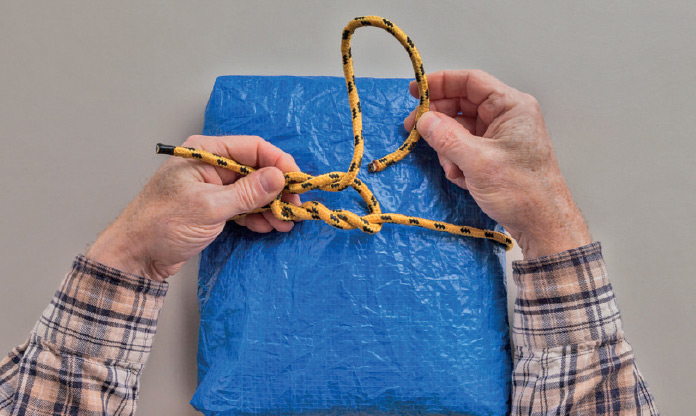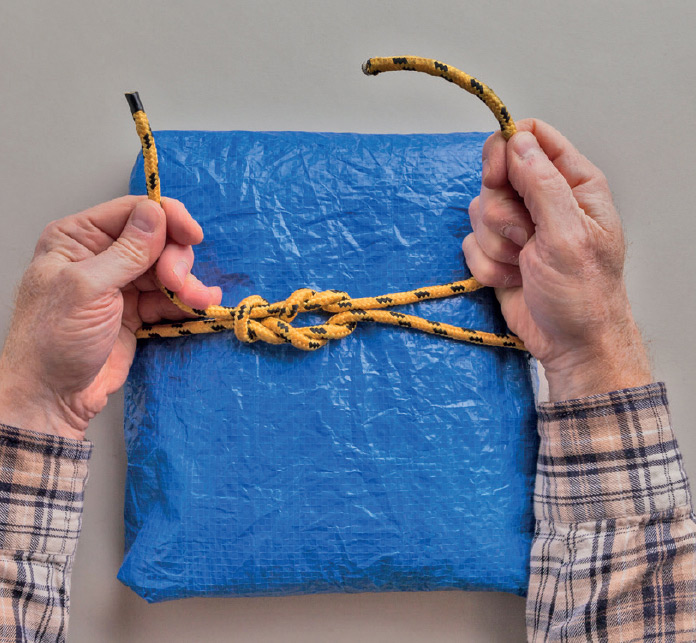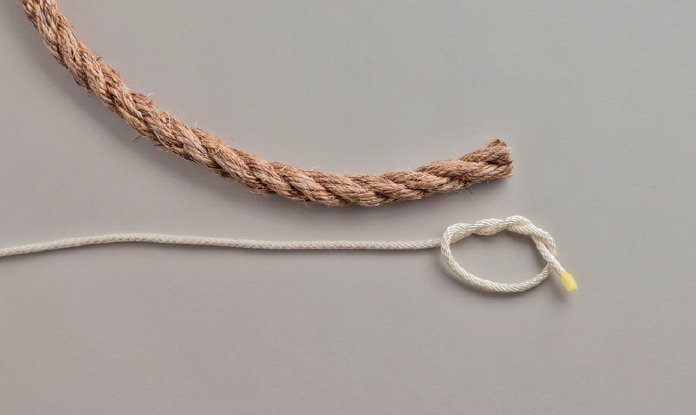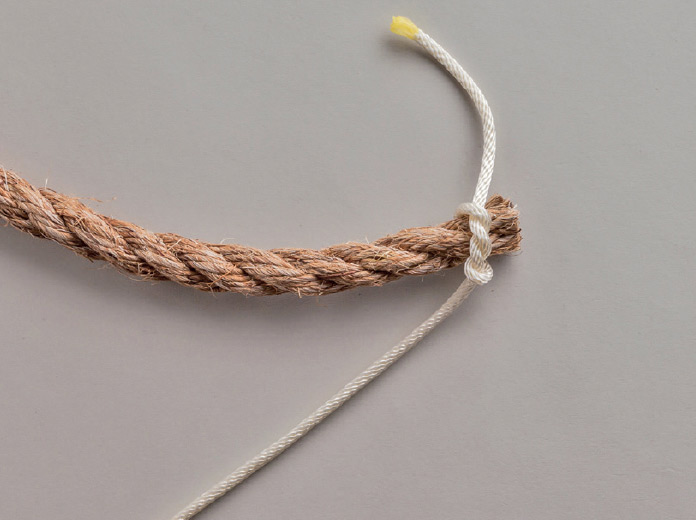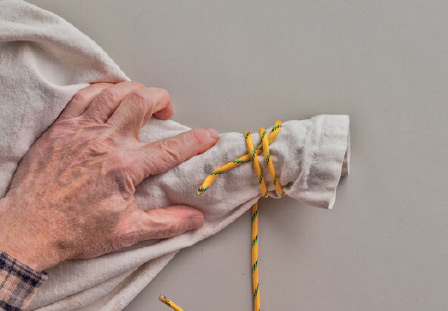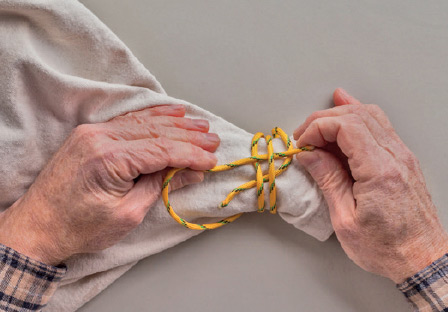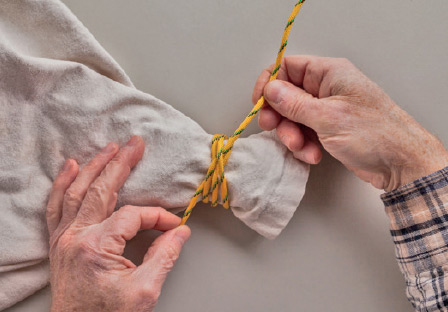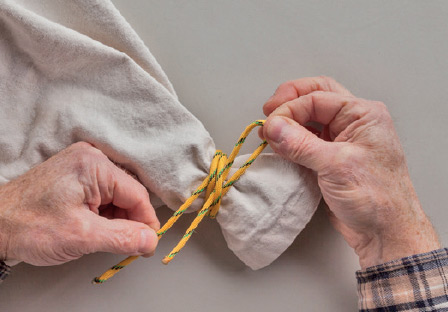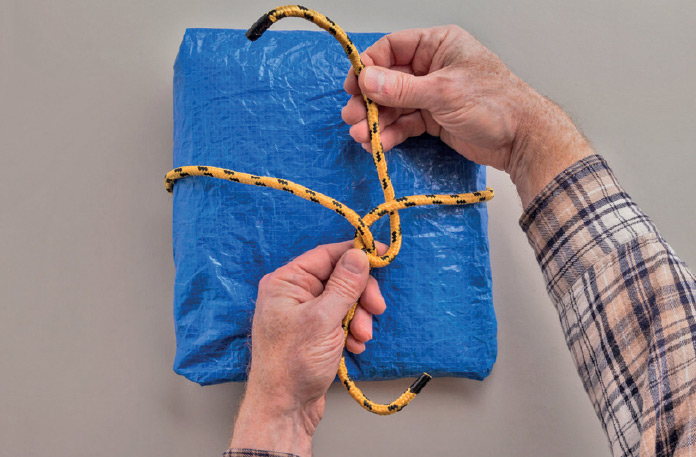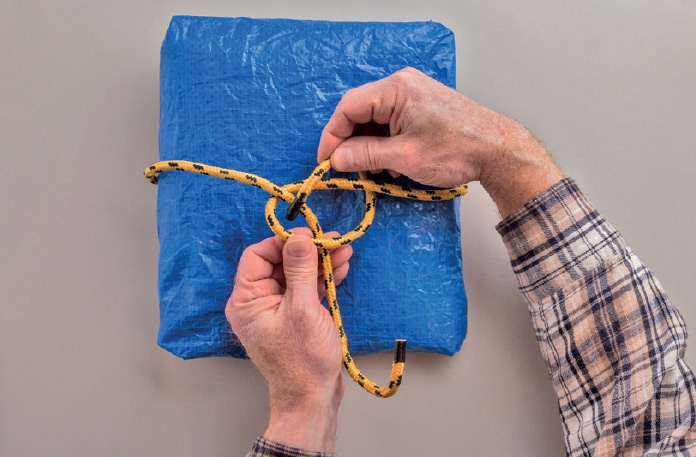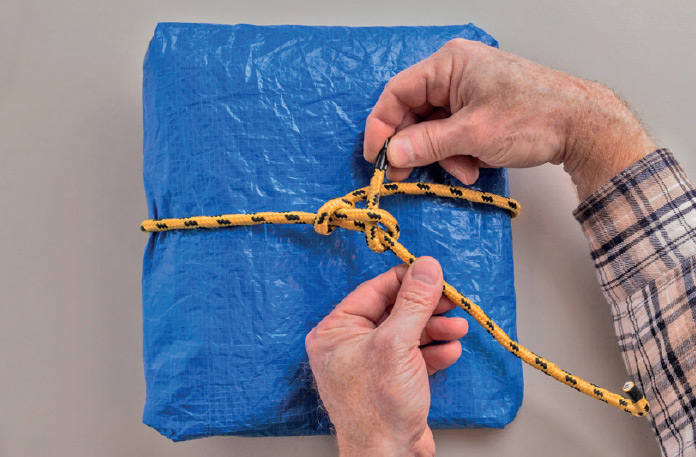Part Four
Binding Knots
Binding knots are tied tightly around an object or objects, either to secure the object itself (as when tying up a package or bundle), or to anchor one end of the rope solidly to an object as a first step in making a solid connection with another object—for example, when lashing two poles together to build a shelter (see ).

17.
Uses: packages, bundles, reefing sails, bending ropes end-to-end
Pros: simple to tie and untie; fairly secure
Cons: can slip; works as a bend only with ropes of equal diameter; difficult to untie under load; difficult to make tight as a binding

18.
Uses: packages and bundles that must be untied easily; bootlaces
Pros: easy to tie; secure under load; unties easily
Cons: not very secure if not under load

19.
Uses: object lesson in improper knotting
Pros: none
Cons: unstable; slips easily

20.
Uses: binding packages or sacks
Pros: fairly secure; signals pilferage
Cons: can’t be tied tightly

21.
Uses: packages, bundles, surgical ligatures
Pros: secure, resists slipping, easier to tie tight under load than a Square Knot
Cons: requires more force than a Square Knot to tighten; more difficult to untie

22.
Uses: packages, bundles, slippery items
Pros: more secure than a regular Surgeon’s Knot, good for slippery rope
Cons: more difficult to untie than a regular Surgeon’s Knot

23.
Uses: temporary rope whipping, bag closure, general-purpose hitch
Pros: fairly secure; easy to tie
Cons: less secure than Constrictor Knot; difficult to untie

24.
Uses: bag closure
Pros: secure; easy to tie with one or both hands
Cons: not as secure as a Constrictor Knot; can be difficult to untie

25.
Uses: packages, bundles
Pros: adjustable for tightness; works in thin or medium cordage
Cons: more complex than a Square or Surgeon’s Knot
on top of another, the Square Knot is supremely useful both as a binding knot (when tying the rope to itself around another object), and as a bend (to tie the ends of two ropes together). A good mnemonic for tying it correctly is “right over left; left over right.” It can be readily reversed, tying it “left over right; right over left.” Instructions

1. Make a with the right working end over then under the left working end.
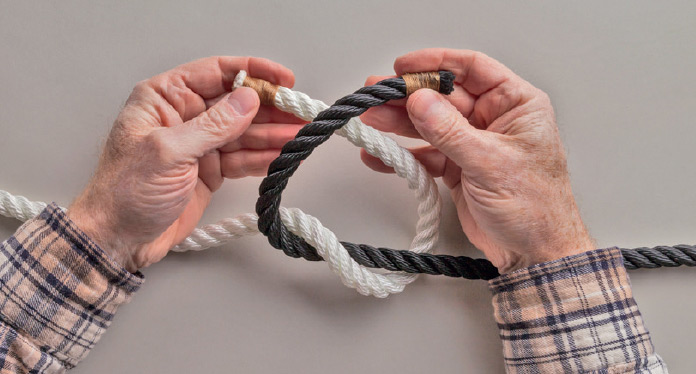
2. Bend both working ends back toward their own standing parts. Take the working end that is now on the left and pass it over the one that is now on the right.
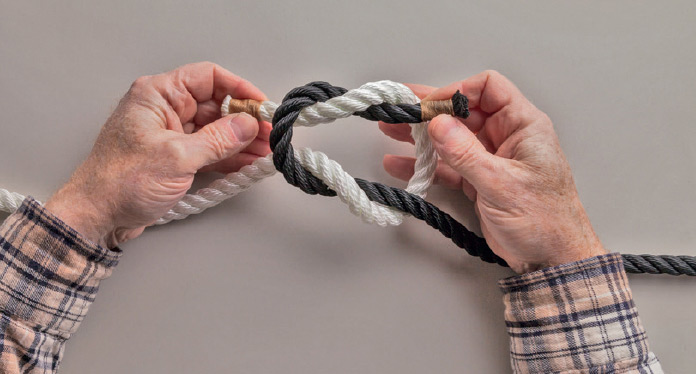
3. Pass the first working end through the bight that has formed in the other rope, from back to front. You’ve just made a second Half Knot in the opposite direction. Pull both working ends tight.
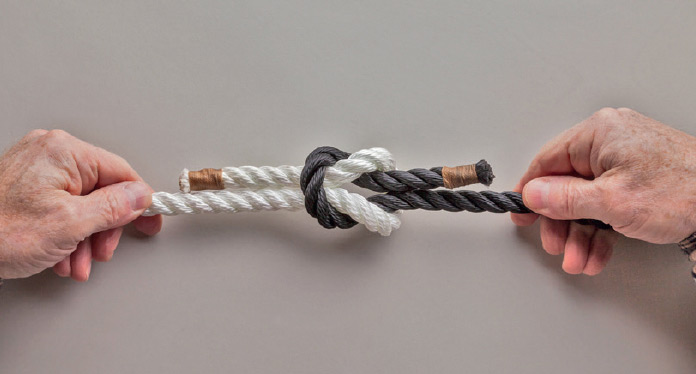
4. Pull both standing parts tight.
, placing the working end of the rope to the right (henceforth, R1) over, then under, the working end of the rope to the left (henceforth, R2), as if you are about to tie a Square Knot (opposite).
Instructions

1. Make a with the right working end over then under the left working end.

2. Bend both working ends back toward their own standing parts. Take the working end that is now on the left and pass it over the one that is now on the right.

3. Pass the first working end through the bight that has formed in the other rope, from back to front. You’ve just made a second Half Knot in the opposite direction. Pull both working ends tight.

4. Pull both standing parts tight.

